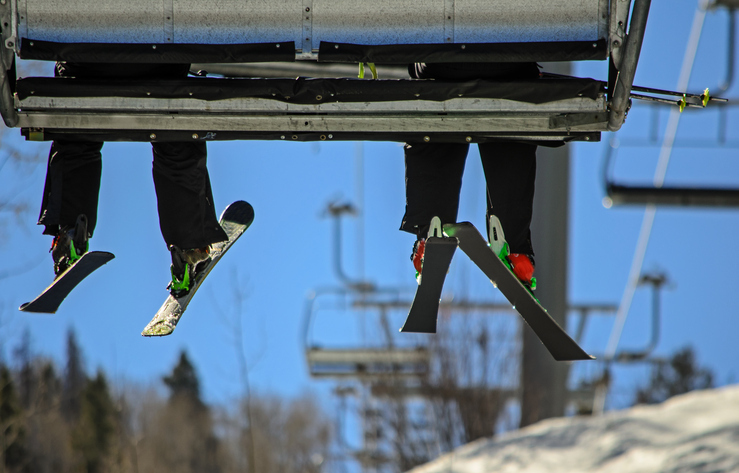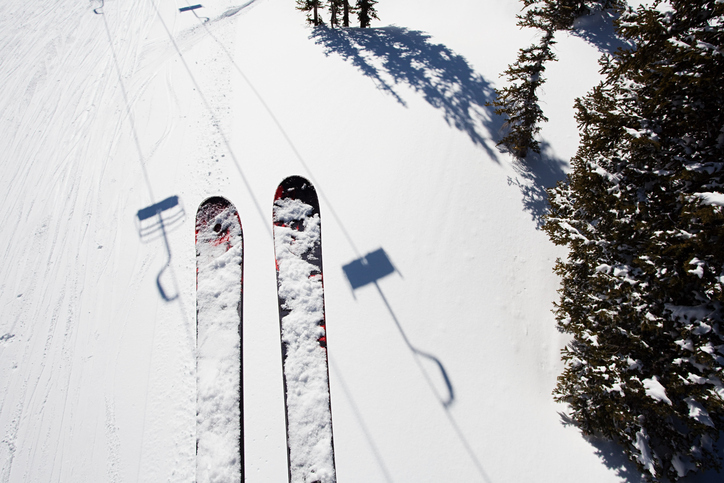America’s Ski Lifts

Skiing is an American pastime. The winter sport—paired with snowboarding for the past several decades of its history—has been practiced from sea to shining sea for over a century. Ski lifts are somewhat more recent—the first was installed in Idaho’s Sun Valley in the 1930s—but remain crucial for traversing snowy peaks efficiently and safely.
The amount of ski resorts in the United States has been gradually declining over the past thirty years. In the 1990/91 ski season, there were 569 ski resorts operational; in 2016/17, there were 481. However, ski lifts—whether in the form of chairlifts, gondolas, rope tows, T-bars, or J-bars—still are introduced continuously, and older lifts are subject to continuous management. In fact, for the 2017/18 ski season, there were 40 new ski lifts installed in North America.
Other than the type of passenger ropeway installed on the mountain, the exact structure of a ski lift can vary. Depending on the amount of passenger traffic anticipated, ski lifts can be designed to carry different quantities of individuals at once. Furthermore, the specific conditions of the mountain that it serves, e.g. incline, altitude, length, can serve as determinants.
There are only four chairlifts in the United States greater than 10,000 feet in length. The longest of these is Slide Brook Express, located at Sugarbush, in Vermont. This detachable quad stretches out 11,012 feet, taking skiers and snowboarders over two miles.
Ski Lift Safety
As the primary means of on-mountain transport for skiers and snowboarders, ski lifts should assure the safety of their passengers. At face value, the idea of a chairlift or a gondola can be quite frightening. Arguably, heights are one of the few things that humans are intrinsically born fearing, and for some, this apprehension can be overwhelming. In fact, over 23 million Americans have acrophobia—the fear of heights.

However, ski lifts are a remarkably safe mode of transport. According to the National Ski Areas Association (NSAA), since 1973, out of the 17.1 billion lift rides taken by skiers and snowboarders encompassing this multigenerational time span, there have been 13 deaths attributed to chairlift malfunctions in the United States. Only one of these fatalities took place after 1993.
The annual fatality rate per 100 million miles traveled on ski lifts is 0.146. To put this into better context, despite the fact that it involves moving dozens of feet above the ground during the cold winter months, a passenger is five times more likely to suffer a fatality riding an elevator than riding a ski lift.
ANSI B77.1 – Ski Lift Standard
Safety can be provided with chairlifts and other passenger ropeways used on ski resorts in numerous ways. For example, the passengers can put the safety bar down, something that is actually legally required in some states.
For the mechanical stability of the aerial lifts, conformance to ANSI B77.1-2022: Passenger Ropeways – Aerial Tramways, Aerial Lifts, Surface Lifts, Tows and Conveyors – Safety Standard can help to assure the reliable motion of the systems and limit malfunctions and other issues that may serve as a hindrance to passenger safety. This American National Standard is developed by NSAA, which is also an ANSI-accredited standards developing organization.
ANSI B77.1-2022 establishes standard guidelines for the design, manufacture, construction, operation, and maintenance of passenger ropeways.
You can learn more about the the ANSI B77.1-2022: Passenger Ropeways – Aerial Tramways, Aerial Lifts, Surface Lifts, Tows and Conveyors – Safety Standard here.






